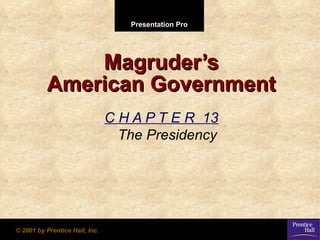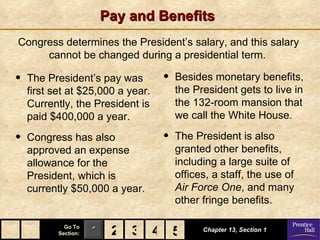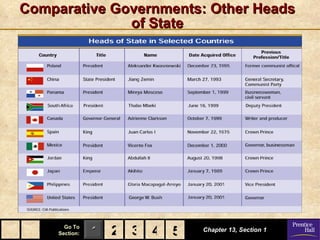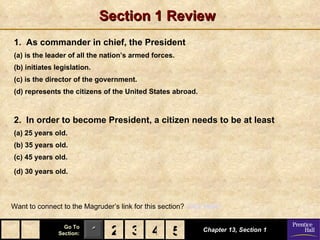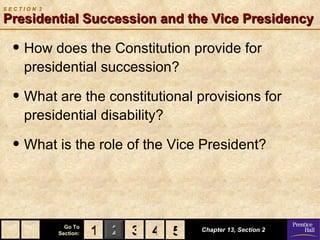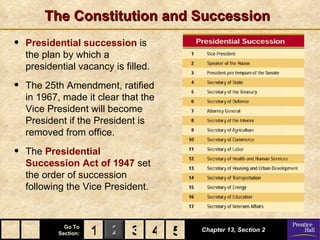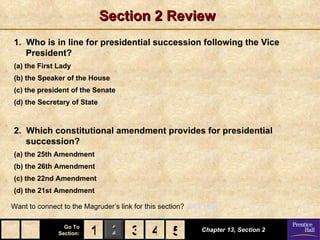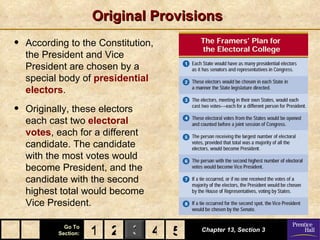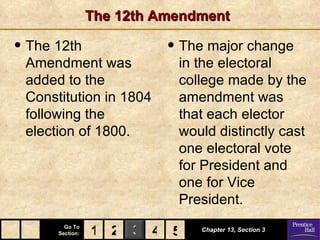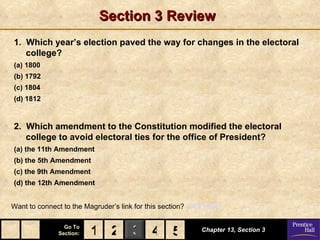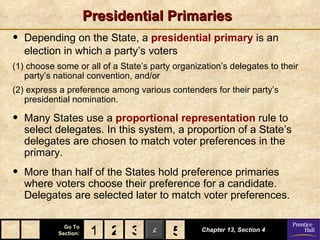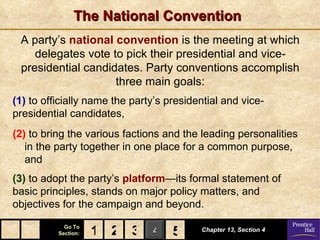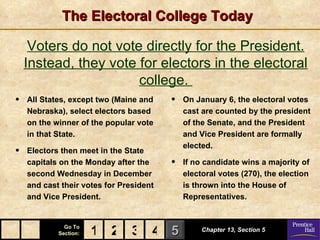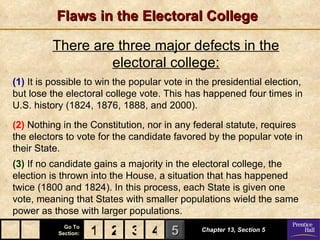The document provides an overview of the presidency, including the president's roles and qualifications, presidential succession, the selection process, and the electoral college. It covers sections from a chapter on the presidency, with each section summarizing key points on a topic and including review questions. The sections discuss the original provisions in the Constitution for selecting the president, how political parties changed this process, the role of conventions and primaries in nominations, and flaws in the current electoral college system.
